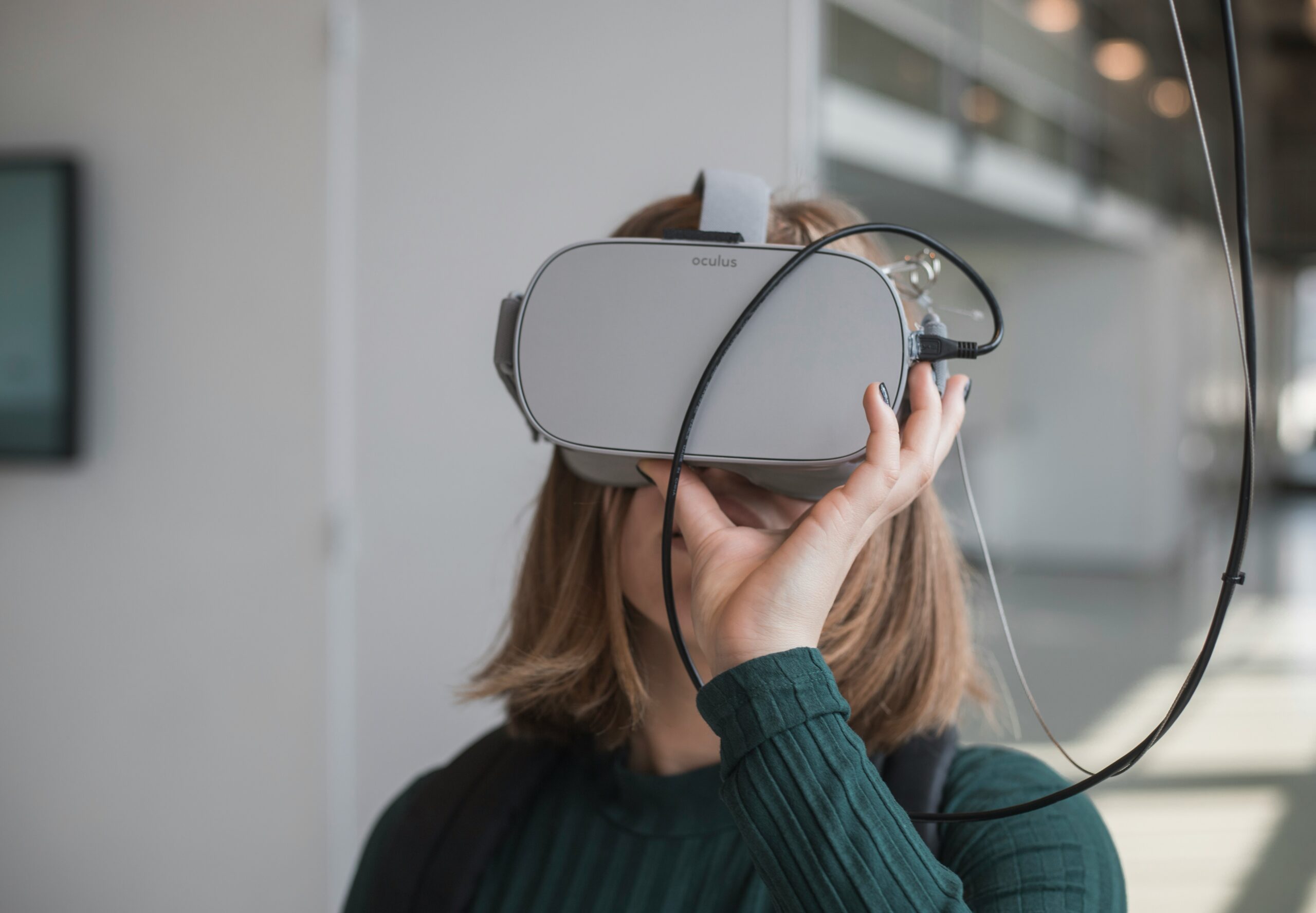One of the most exciting recent advances in VR technology is the development of a new algorithm that turns iPhones into holographic projectors. This breakthrough technology allows users to transform their iPhones into portable holographic displays, bringing virtual objects to life in the palm of their hands.
The algorithm works by leveraging the capabilities of the iPhone’s camera and display to create a three-dimensional holographic projection. By tracking the user’s movements and adjusting the projection in real-time, the algorithm creates the illusion of a hologram floating in space. This technology opens up a whole new world of possibilities for VR applications, from gaming and entertainment to education and design.
Imagine being able to project a virtual chessboard onto your coffee table and play a game with a friend who is thousands of miles away. Or visualize a new piece of furniture in your living room before making a purchase. With this new algorithm, these scenarios are no longer confined to the realm of science fiction.
But the development of holographic projectors for iPhones is just one example of the many exciting advancements in VR technology. In recent years, there have been significant improvements in display resolution, field of view, and tracking accuracy, making VR experiences more immersive and realistic than ever before.
Display resolution is a critical factor in creating a convincing VR experience. Higher resolution displays allow for sharper and more detailed visuals, reducing the “screen door effect” that can break immersion. With the introduction of 4K and even 8K displays, VR headsets can now deliver stunningly realistic graphics, bringing virtual worlds to life in unprecedented detail.
Another area of advancement is the field of view (FOV). A wider FOV allows users to see more of the virtual world, increasing the sense of presence and immersion. Early VR headsets had relatively narrow FOVs, but recent innovations have expanded the field of view, providing a more natural and encompassing visual experience.
Tracking accuracy is another crucial aspect of VR technology. Accurate tracking ensures that the virtual world aligns seamlessly with the user’s movements, preventing motion sickness and enhancing the sense of presence. With the introduction of inside-out tracking systems, which use cameras and sensors built into the headset to track movement, VR experiences have become more responsive and precise.
These advances in VR technology have not only improved the quality of gaming and entertainment experiences but have also opened up new possibilities in fields such as medicine, architecture, and training. Surgeons can now practice complex procedures in a virtual operating room, architects can walk through virtual buildings before construction begins, and astronauts can train for space missions in realistic virtual environments.
As VR technology continues to evolve, we can expect even more exciting advancements in the future. From haptic feedback systems that provide a sense of touch to eye-tracking technology that enhances realism, the possibilities are endless. Virtual reality is no longer just a novelty; it is a powerful tool that is transforming the way we work, play, and learn.
Furthermore, the evolution of virtual reality has also seen advancements in haptic feedback technology. Haptic feedback refers to the sense of touch in virtual environments. Early VR systems lacked the ability to provide realistic tactile sensations, limiting the overall immersion. However, recent developments have introduced haptic gloves and suits that can simulate the sensation of touch, allowing users to feel objects and textures in the virtual world.
Moreover, the evolution of virtual reality has also led to the creation of more sophisticated software and content. In the past, VR experiences were limited to basic games and simulations. However, with advancements in computer graphics and software development, virtual reality can now offer highly realistic and interactive experiences. From immersive storytelling to virtual training simulations, the possibilities are endless.
Additionally, the evolution of virtual reality has also seen the integration of augmented reality (AR) technology. AR combines virtual elements with the real world, enhancing the user’s perception and interaction with their surroundings. This integration has opened up new possibilities in various industries, such as architecture, where designers can overlay virtual models onto real-world environments to visualize their designs.
Furthermore, the evolution of virtual reality has also brought about improvements in the accessibility and affordability of VR technology. In the past, VR headsets were expensive and limited to a few high-end devices. However, with the introduction of standalone VR headsets and smartphone-based VR systems, virtual reality has become more accessible to a wider audience. These affordable options allow more people to experience the benefits of virtual reality without breaking the bank.
In conclusion, virtual reality has come a long way since its early days. With advancements in hardware, software, and content, VR has expanded its reach beyond gaming and entertainment. From healthcare to education to architecture, virtual reality has become a powerful tool with countless applications. As technology continues to evolve, we can expect even more exciting developments in the world of virtual reality.
Introducing Holography in VR
While VR technology has made great strides, there is still room for innovation. One exciting development is the integration of holography into virtual reality experiences. Holography is a technique that creates three-dimensional images or projections using light diffraction.
Traditionally, holography has been a complex and expensive technology, requiring specialized equipment and expertise. However, a new algorithm has been developed that allows iPhones to function as holographic projectors. This algorithm utilizes the iPhone’s built-in camera and display to create holographic projections.
By leveraging the iPhone’s capabilities, this algorithm opens up new possibilities for holographic experiences. Users can simply place their iPhones in front of them and see virtual objects projected as holograms in real space. This breakthrough brings holography into the mainstream and makes it more accessible to a wider audience.
The integration of holography into VR not only enhances the visual immersion but also adds a new level of interactivity. With traditional VR experiences, users are limited to interacting with virtual objects through controllers or gestures. However, with holography, users can now physically interact with virtual objects in real space.
Imagine being able to reach out and touch a holographic object, feeling its texture and weight as if it were real. This level of realism and interaction takes the VR experience to a whole new level. Whether it’s exploring a virtual museum, playing immersive games, or collaborating with others in a virtual workspace, the integration of holography adds a new dimension of engagement and realism.
Furthermore, the integration of holography in VR opens up new possibilities for industries such as architecture, engineering, and medicine. Architects can now visualize their designs as holograms, allowing them to better communicate their ideas to clients. Surgeons can use holography to plan and practice complex procedures in a realistic virtual environment before performing them on patients.
As holography continues to advance and become more accessible, we can expect to see even more innovative applications in VR. From education and entertainment to healthcare and beyond, holography in VR has the potential to revolutionize how we interact with virtual worlds and enhance our overall digital experiences.
5. Virtual Travel and Tourism
One of the exciting applications of VR and holography is in the field of travel and tourism. With the integration of these technologies, people can virtually visit destinations and experience different cultures without leaving their homes. By wearing VR headsets and using holographic projections, users can explore famous landmarks, walk through virtual streets, and even interact with virtual tour guides.
This has the potential to revolutionize the travel industry by providing a more accessible and cost-effective way for people to experience new places. It can also be a valuable tool for travel agencies and hotels to showcase their offerings to potential customers. By providing immersive virtual tours, they can give travelers a realistic preview of what to expect, helping them make informed decisions.
6. Virtual Meetings and Collaboration
In today’s globalized world, virtual meetings and collaboration are becoming increasingly common. VR and holography can take these experiences to the next level by creating more realistic and engaging interactions. Instead of staring at a screen, participants can meet in virtual environments and see each other as holographic representations.
This can enhance communication and collaboration by providing a sense of presence and immersion. It can also be particularly beneficial for remote teams, allowing them to feel more connected and engaged. With the ability to share and manipulate virtual objects, participants can collaborate on projects more effectively and creatively.
7. Rehabilitation and Therapy
VR and holography have shown promise in the field of rehabilitation and therapy. By creating virtual environments and using holographic representations, patients can engage in immersive and interactive experiences that aid in their recovery.
For example, stroke patients can practice movements in a virtual environment, helping them regain motor skills. Individuals with phobias can undergo exposure therapy in a controlled and safe virtual setting. These technologies can also be used to provide mental health support, allowing individuals to explore and address their emotions in a virtual space.
The integration of VR and holography in rehabilitation and therapy can provide more personalized and engaging interventions, ultimately improving outcomes for patients.
One area where the future of VR and holography holds great potential is in the field of education. Traditional classroom settings can be limited in their ability to provide hands-on experiences and immersive learning environments. However, with the integration of VR and holography, students can explore historical landmarks, dissect virtual organisms, and even participate in simulated scientific experiments.
Imagine a history class where students can walk through ancient ruins and witness historical events unfold before their eyes. Or a biology class where students can interact with virtual organisms, studying their anatomy and behavior in a way that was never before possible. These immersive experiences can greatly enhance the learning process and make education more engaging and interactive.
Another industry that stands to benefit from the advancements in VR and holography is healthcare. Surgeons can use VR to practice complex procedures in a realistic virtual environment, allowing them to refine their skills and reduce the risk of errors during actual surgeries. Additionally, VR can be used as a therapeutic tool, helping patients overcome phobias or manage chronic pain through immersive and distraction techniques.
Furthermore, the entertainment industry will continue to push the boundaries of VR and holography, creating more immersive and interactive experiences for audiences. Virtual reality gaming has already gained popularity, allowing players to step into the shoes of their favorite characters and explore fantastical worlds. With the integration of holography, these gaming experiences can become even more lifelike, with virtual characters appearing as if they are truly present in the room.
Overall, the future of VR and holography is filled with exciting possibilities. From revolutionizing education and healthcare to enhancing entertainment experiences, these technologies have the potential to transform various industries. As advancements continue to be made in artificial intelligence, haptic feedback, and lightweight headsets, we can expect VR and holography to become even more immersive, accessible, and integral to our daily lives.





